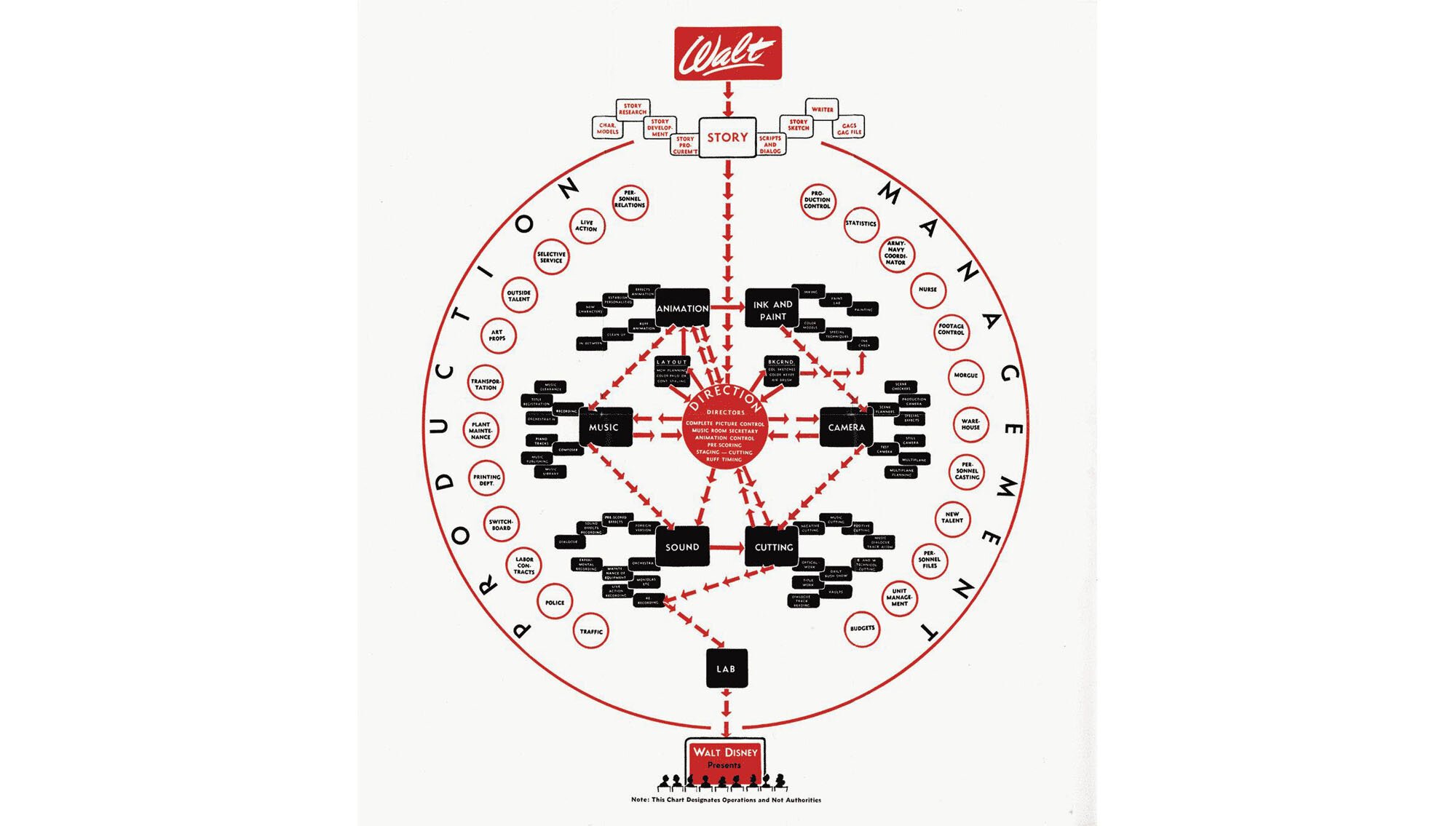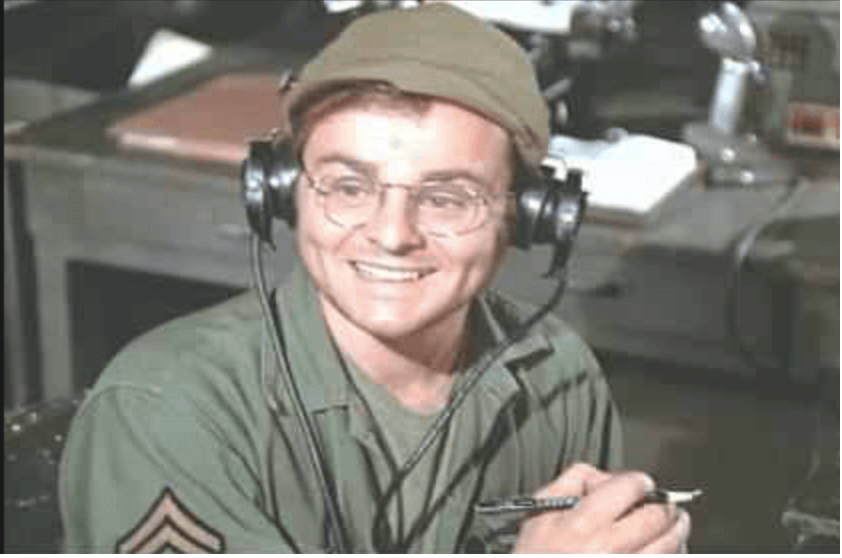How to get Things Done: Raise Your Organizational Awareness
Disney’s 1943 Organisational Chart
Organizational Awareness: The Leader’s Sixth Sense
In our product management community, we rightly place a great deal of attention on the people who are going to use our products. We are constantly answering that seemingly basic (yet challenging) question: What problem are we trying to solve for customers? We test our ideas again and again. Ensuring the design, functionality and technology meets that crucial — often unspoken — user need.
Absolutely all of this is as it should be.
But sometimes, I think we forget that those building, designing and supporting these products are people too — all with different personalities, needs and wants — all with their own problems to solve.
Products are built for people by people. Teams of people. Companies of people.
To become a leader at any level in this product world, we need to be able to manuver the complex human networks and patterns of influence, values, emotions and power that make up our organization’s operating system.
Someone who has the ability to do this can make things happen; they get things done, but perhaps not in the most traditional sense. Instead of making one-dimensional decisions based on what the data, KPI or OKR says, they have the ability to integrate intuitive knowledge of how the organization thinks and feels into the decision at hand. It doesn’t matter their role or place in a hierarchy — they could be an executive, they could be a mid-level manager or entry level teammate. It’s not the title that matters.
It’s their ability to sense the unwritten tone, tide, and climate of an organization. Some call this mastering “social flow”, others call it “political awareness.” In this post, I’m going to explore it as an Emotional Intelligence competency called Organizational Awareness.
Organizational Awareness means having the ability to read a group’s emotional currents and power relationships, and identify influencers, networks and dynamics within the organization.
Daniel Goleman: Organizational Awareness, A Primer
Organizational Awareness in Action
Someone with high Organizational Awareness can:
Make more informed decisions based on tangible and intangible data. They know what the appetite for a decision is, who needs to be influenced, why, and how.
Develop a clear strategy to getting things done because they know the internal (and external) landscapes. They can identify the right person or team for the right job at the right time.
Communicate in a way that resonates. They know the unwritten language and tone of their organization.
Build a coalition to get things done. They have the ability to motivate others to work towards a shared goal.
If you’re in the midst of a transformation or change program you also want people with high organizational awareness on your team. According to a University of Toronto’s Rotman School of Management study, the people who make the greatest contribution to change are those who can read and maneuver informal networks — a skill that isn’t necessarily correlated with position in a company’s hierarchy.
The Radar Effect
A favorite, albeit fictional, example of someone who embodies Organizational Awareness is Walter “Radar” O’Reilly from the TV show M*A*S*H. For those not familiar with the show, Radar was a young corporal and clerk for the M*A*S*H hospital. Typically, someone in that role would be the low person on the totem pole, simply doing what they were told.
Radar was different. He had an amazing ability to get things done; to maneuver the human networks of the military to get supplies, Jeeps, passes, medicines — you name it. He knew how to work the unwritten, unmapped human system to get the unit whatever it needed. He sensed a problem and had a solution before anyone else in the camp even had a clue it existed (thus the name “Radar”). He was a perfect example of how Goleman describes Organizational Awareness in Leadership that Gets Results: “The ability to read the currents of organizational life, build decision networks and navigating politics.”
Building Your Organizational Awareness
As with any Emotional Intelligence competency, you can build Organizational Awareness with practice and commitment. Here are a few ways to get going:
1. Put those empathy tools to work on your internal audiences
As I mentioned at the beginning of this post, we spend a lot of time building up empathy for our customers. We want to know what moves them. What will captivate them so much that they may change a behavior or try something completely new. We watch them interact with prototypes. We obsess over their feedback. We try to interpret their needs into a viable product that will make their lives easier.
Imagine if we put those same skills into action with our team and colleagues (or even that department that we don’t like so much). Observe a meeting the same way you would a customer interview. What’s the tone of the meeting? What facial expressions and other non-verbal behaviors are being exhibited? Is everyone yawning? Are eyes being rolled? Who’s doing most of the talking? Is there a decision maker? Who is really listening? Who holds the power?
There’s so much we can learn by making a concerted effort to sit back, watch and listen.
It’s not easy, but try it a few times and you’ll come away with a different understanding of the way your team and colleagues work, and how you can make a difference.
2. Step away from your laptop. Put down the phone.
In many ways our laptops and smartphones have become our best friends. They come with us to meetings (great distraction from participating or observing), they’re our focus when walking between meetings (perfect time to send a quick email or at least act like we are), and if you’re like me, they’re even a constant companion during lunch (the food stains are so embarrassing). No wonder we struggle building awareness at work — we are glued to our screens!
To counteract the power of the digital device, authors of the book Emotional Intelligence 2.0, Travis Bradberry and Jean Greaves, recommend an exercise called 15 minute tours. Commit to spending a few minutes a day walking around the office to get back in touch with what’s happening around you. (Oh, and please put the device down when you do this). Take a real look around. What’s the vibe of the office? When do people move around? What do people’s workspaces look like? How do people react when they see you walking around?
There’s a great, complex network of people, emotion, influence, and power all around us. And doing something as simple as lifting your head up and experiencing your office as a sort of “tourist” can give you a unique perspective and a great basis for building organizational awareness.
Practice won’t make you perfect … but it could make you a stronger leader
While these tips may help you to take the first steps in building Organizational Awareness, according to Michele Nevarez in her article, “Essential Skills for Building Organizational Awareness,” the underlying work you’re really doing is developing three fundamental competencies of Emotional Intelligence:
Self Awareness: The ability to understand the impact of our emotions on ourselves and others
Empathy: The ability to read the same elements in others
Emotional self control: The ability to shift our behaviour to fit situations
It’s not easy and it’s not fast. But, making progress in each of these essential areas helps us grow into the leaders our evolving, complex organisations of today need to survive and thrive.
For more on self awareness, please check out my previous post.
For more information, check out the recommended reading:
Organisational Awareness, A Primer by Daniel Goleman, Richard Boyatz, Vanessa Druskat, Michele Nevarez, and George Pitagorsky
Organizational Awareness in Action by George Pitagorsky
A Sixth Sense for Reading your Company by Daniel Goleman
The Network Secrets of Secret Change Agents by Julie Battilan and Tiziana Casciaro
Leadership that Gets Results by Daniel Goleman
Subscribe to Product Leadership Essentials
Sign-up to my email newsletter to learn more about how to better understand and build your authentic Product Leadership skills.



